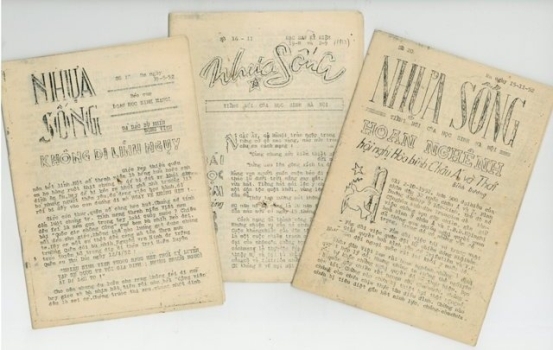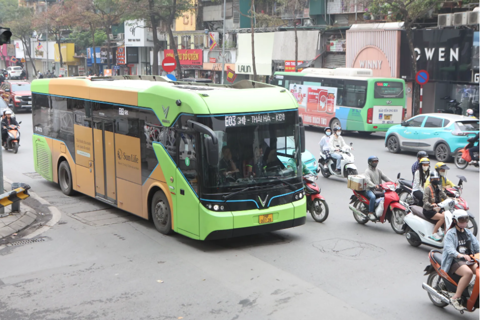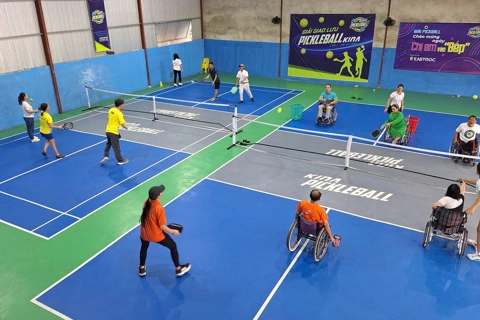70 years after Hanoi Liberation: Remembering Victory Day
With a spirit of patriotism, intelligence, and youthful dynamism, thousands of Hanoi students took up arms in the fight against French colonialism.
Editor's note:
Seventy years have passed, but the heroic memories of the day when "the five gates welcomed the victorious soldiers" still linger in the minds of historical witnesses who were active in the student movement during the war of resistance against France and had the honor of welcoming Ho Chi Minh's troops to take over Hanoi.
The takeover of the capital on October 10, 1954, marked a turning point, ushering in a new and most glorious period in the thousand-year history of Thang Long-Dong Do-Hanoi. The liberation after nine years of intense resistance was marked by numerous losses and sacrifices as well as the unwavering spirit of Vietnam's army and people against a formidable foe.
Part 1: Hanoi during the years of the fervently patriotic youth movement
Between 1947 and 1954, the capital's schools were saturated with the anti-French student movement. Thousands of Hanoi students joined the fight against French colonialism with patriotism, intelligence, and youthful vigor, consolidating the Vietnamese revolution in the heart of the enemy.
Hanoi rises
Holding my hand as we walked down the eerie, dark corridor of the Hoa Lo prison relic, Do Hong Phan, born in 1933, former Director of the Department of International Cooperation, Ministry of Irrigation (now the General Department of Irrigation, Ministry of Agriculture and Rural Development), brought back memories of the days when the revolutionary fighting spirit of the capital's youth was rekindled.
| Do Hong Phan recalls memories through an exhibition at the Hoa Lo Prison Relic. Photo: Ngo Minh/The Hanoi Times |
At that time, Phan, a student at Chu Van An School, was appointed Secretary of the Youth Union of Resistance Students of Trung Vuong School by the City Youth Union.
"There were at least one or two young resistance fighters, male or female, in every home in Hanoi. Although the majority of us were from privileged backgrounds, we were always willing to battle with our male friends to defend every square inch of the capital, according to Phan.
Recalling the early days of her participation in the revolutionary movement, from the end of 1949 to the beginning of 1950, she said that these were the most exciting days of her life. At the age of 16-17, patriotic young people took part in stirring up student movements, distributing leaflets, going on strike, and writing articles.
"Because I was actively involved in the struggle, I learned more about the party and the proletarian movement. At the beginning of June 1950, I learned that I was to be admitted to the Party. Sixteen and a half is not old enough to be a Party member according to the rules, but they took into account the special circumstances, so I was accepted into the Party anyway," Phan recalled.
The admission ceremony was held in the warehouse of Nguyen Thi Dan, a base for women in the resistance war at Dong Xuan market. The warehouse was filled with bales of cloth, enough for a small table and a few chairs, and on the wall was a hammer and sickle flag the size of two hands and a 4x6cm photo of President Ho Chi Minh.
"Among the things my superiors told me, the one I remember most is this: "If I am captured and tortured by the enemy, as a Party member I must resolutely maintain my integrity and be ready to overcome all difficulties and challenges."
It was at this time that younger people were drawn into the resistance movement by the revolutionary zeal of their older brothers and sisters and the commitment of their peers.
Nguyen Dinh Tan (born 1936) joined the revolution following the example of his elder brother, the martyr Nguyen Sy Van.
"In early 1948, my elder brother entered Chu Van An School to continue his final year of high school while I studied at Nguyen Trai School, not knowing that my brother had joined the student movement against the French," Tan recalled.
On the night of May 18, 1948, to celebrate President Ho Chi Minh's birthday (May 19), Nguyen Sy Van and his two friends, Nguyen Van Kham and Nguyen Trong Quang sneaked past the enemy's strict surveillance and swam to the Turtle Tower to hang the national flag.
| Nguyen Dinh Tan followed his brother and joined the resistance. Photo: Ngo Minh/The Hanoi Times |
The next morning, when the enemy at the Hang Trong police station across the street and the City Hall (now the Hanoi People's Committee) saw the flag flying on Turtle Island, they rushed in to take it down, but the omnipresence of the resistance was already felt by the people, who told each other, "The Viet Minh (League for the Independence of Vietnam) put up the flag on Turtle Tower."
"This action caused a great stir. The red flag with the yellow star fluttered in the middle of Hoan Kiem Lake, giving people confidence in the resistance," Tan said.
No one in the family knew about the action until May 25, 1948, when agents from General Department II (the French intelligence agency) arrested Van at his home.
Van and Kham were first taken to the Cua Dong Stone Cellar for interrogation, where they were brutally tortured. They were then transferred to Hoa Lo Prison, convicted, and sentenced to hard labor in Tien Yen District, northern Quang Ninh Province. The family has since lost contact with them.
Only later did Tan learn that his brother had escaped from prison but was recaptured by the enemy in 1948 and tortured to death in Khe Tu Prison, Tien Yen District.
| The Hanoi youth movement against the French invaders. File Photo |
Following his brother's example, Tan became an active member of the student movement in the capital. He and his friends at Chu Van An High School staged performances, distributed leaflets, propagandized, and went on strike in support of the revolution and to protest the conscription of students into the army.
"The students' struggle in the heart of the enemy was like an underground wave that kept Hanoi in constant turmoil during the temporary occupation. The enemy always tried to find ways to suppress the movement, but the more difficult it was, the more we tried. When the previous generation was suppressed and imprisoned, the next wave went on strike to demand their release," Tan said.
Life Essence" nourishes the will of the youth
Nguyen Hac Dam Thu, born in 1935, former Deputy Director of the International Department of the Vietnam Women's Union, also became enlightened about the revolution early on, thanks to the example of her relatives, including her cousin Do Hong Phan.
| Nhua Song (Life Essence) Newspaper, published by young people in Hanoi. File Photo |
Thu became one of the students who contributed to the Nhua Song (Life Essence) newspaper (later the Tien Phong newspaper), one of the most effective tools for mobilizing young people and students in practical activities to support the resistance.
In the beginning, the Life Essence newspaper was printed by hand using purple ink lithography. In 1951-1952, it was printed on white paper using the innovative Ronéo technology. It had a soft cover that resembled a student notebook and made it easier to conceal in a pocket.
It was difficult to produce and print newspapers in the shadows, but it was even more difficult to distribute them.
With a paper size as small as a book or a student's notebook, the newspaper was put in a bag after printing and taken to school. In addition to distributing it according to the Youth Union, many people took advantage of the break to secretly put the paper in a desk drawer, some gave it to a few readers, and then carefully monitored their attitudes. Those who quietly hid the paper in their pockets and took it home to read were sympathetic to the resistance.
Gradually, the Life Essence newspaper helped the Resistance Youth Union attract many sympathetic young people to the organization. True to its name, Life Essence is a newspaper that carries the spirit of students during the Resistance War. It is the fruit of the youthful energy and enthusiasm of those in their twenties.
Recalling her days as a journalist, Thu said that because of their involvement in the newspaper, many students and resistance fighters in the capital were captured by the enemy, savagely tortured, and imprisoned in Hoa Lo Prison. But if one group was imprisoned, another group outside would rebuild the movement so that the Life Essence would continue to flow in the hearts of the youth who were enthusiastic about the revolution and nurture the belief that one day the capital would be liberated.
Stories in this series:
Part 1: 70 years after Hanoi Liberation: Remembering Victory Day
Part 2: In memory of Hanoi: Resistance youth turn prisons into revolutionary schools

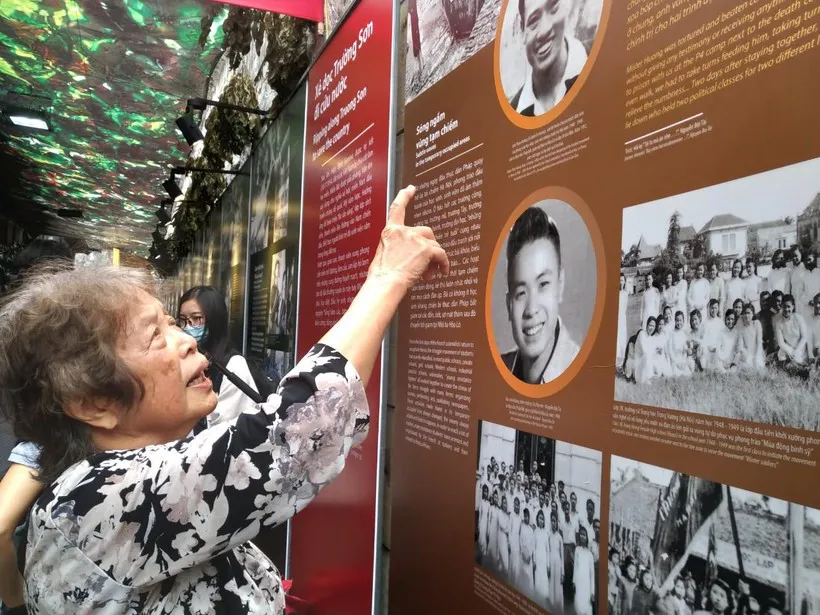
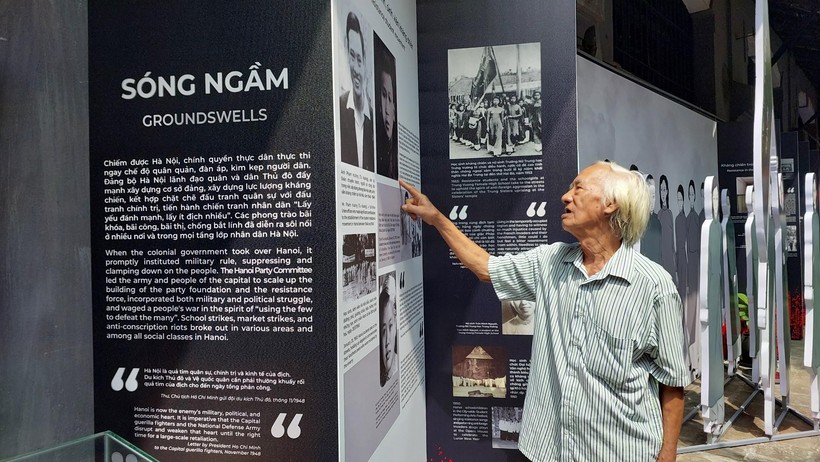
.jpg)
